Exploring the Russian Arctic: A wild journey to the Kola Peninsula
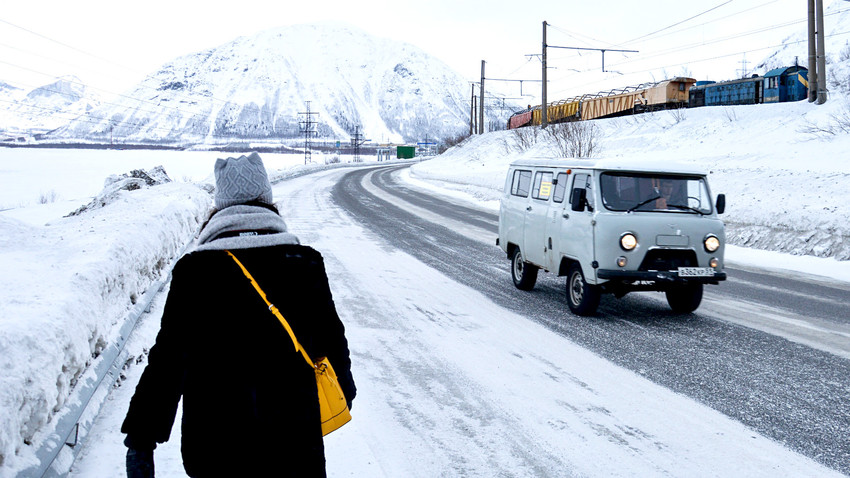
While living in Moscow, I decided to make the most of a four-day weekend by going on an adventure to a remote part of Russia. Manon, a friend of mine who also lives here, works in a travel agency and knows a lot about expeditions, so she was the perfect companion for this trip. We decided to visit the Kola Peninsula, which is located at the northernmost point of Russia on the shores of the White and Barents Seas. It is a part of the Murmansk Region and is located 1,487 km north of Moscow. What was our goal? To see the aurora borealis, those phantasmagorical northern lights that illuminate the night sky at this time of year.
Unwinding on a 31-hour long train journey
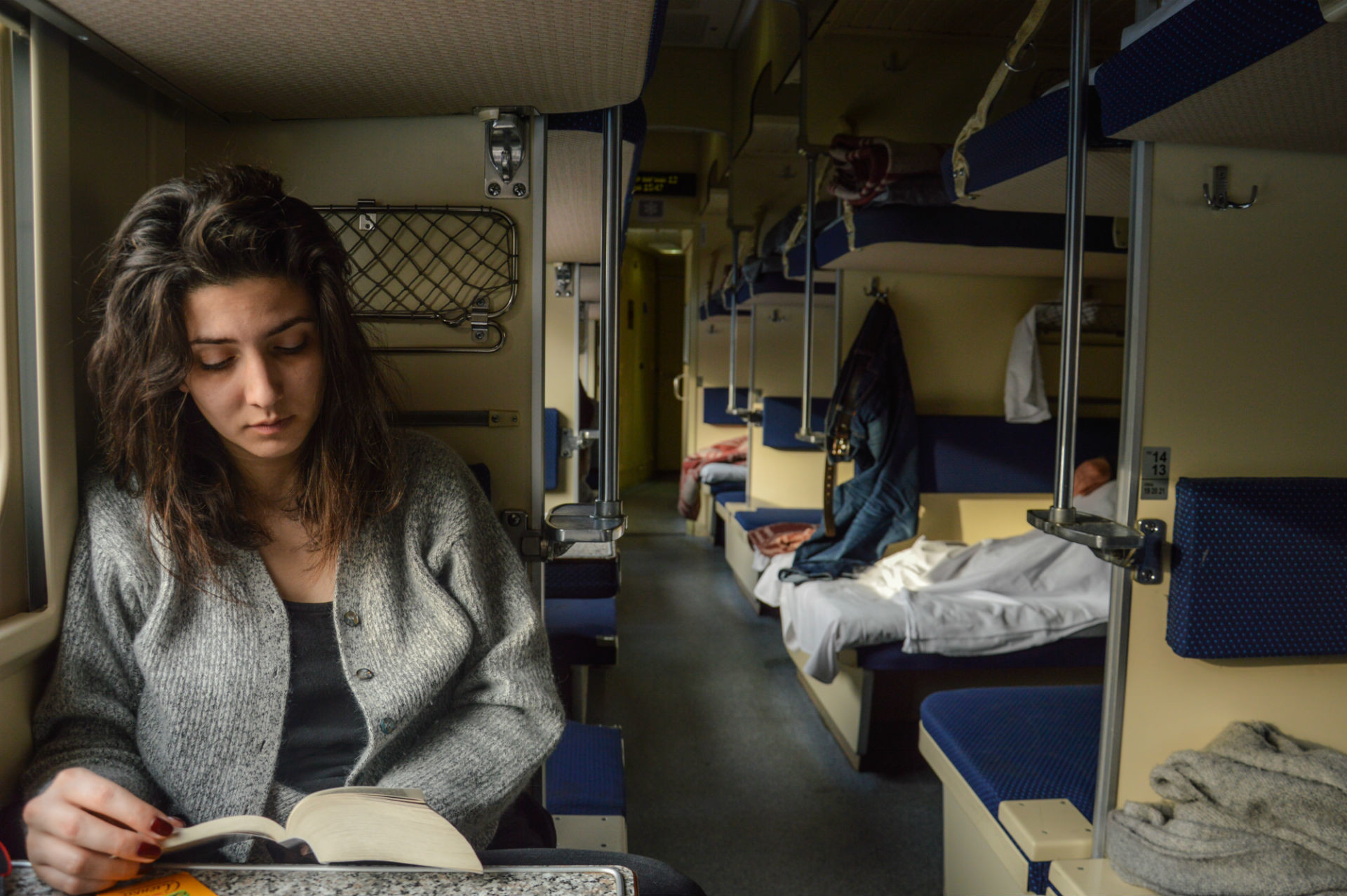
Keeping ourselves occupied on a sleeper train.
Erwann Pensec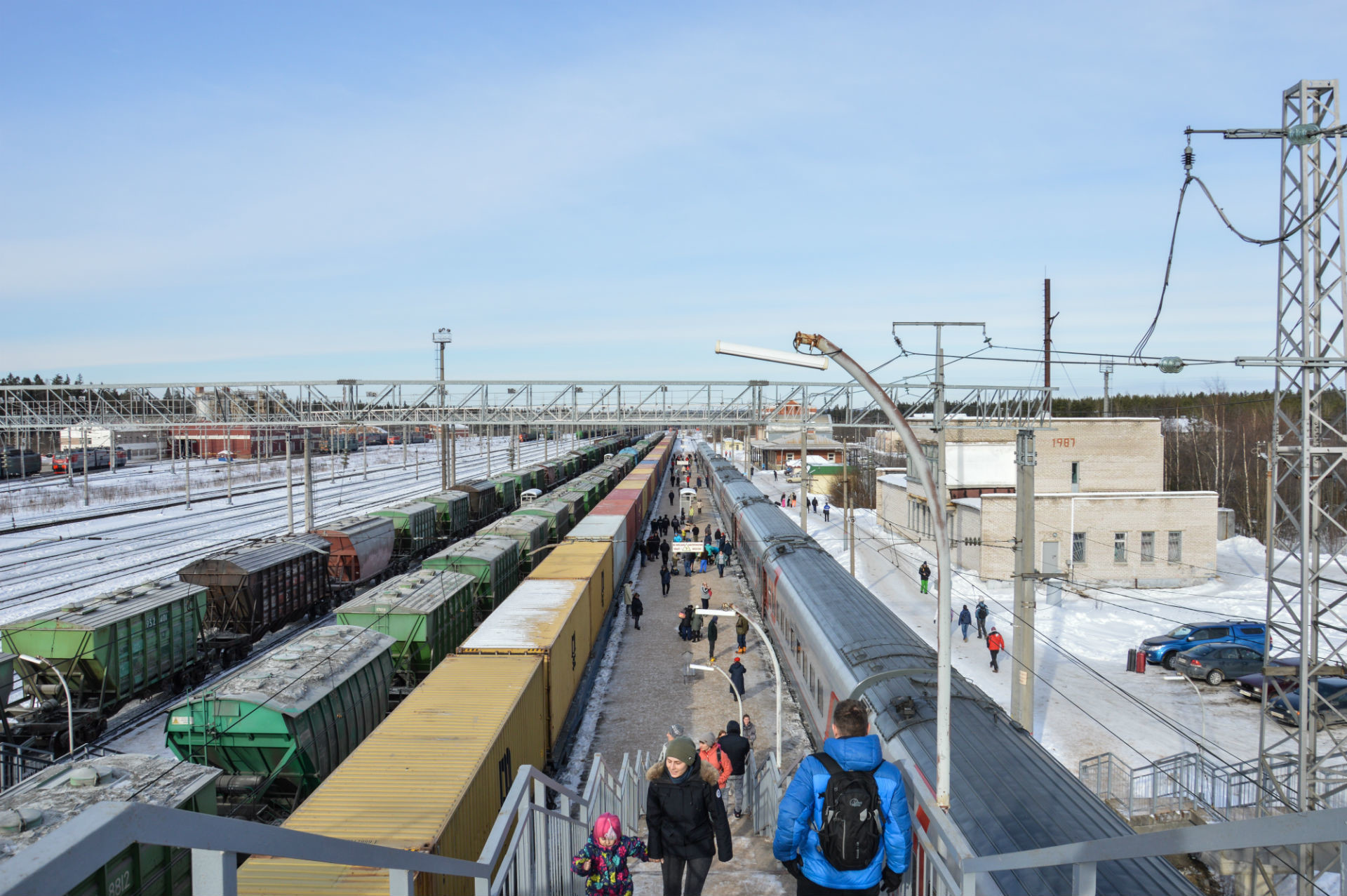
We’re not even halfway there and the landscape is nothing like Moscow
Erwann Pensec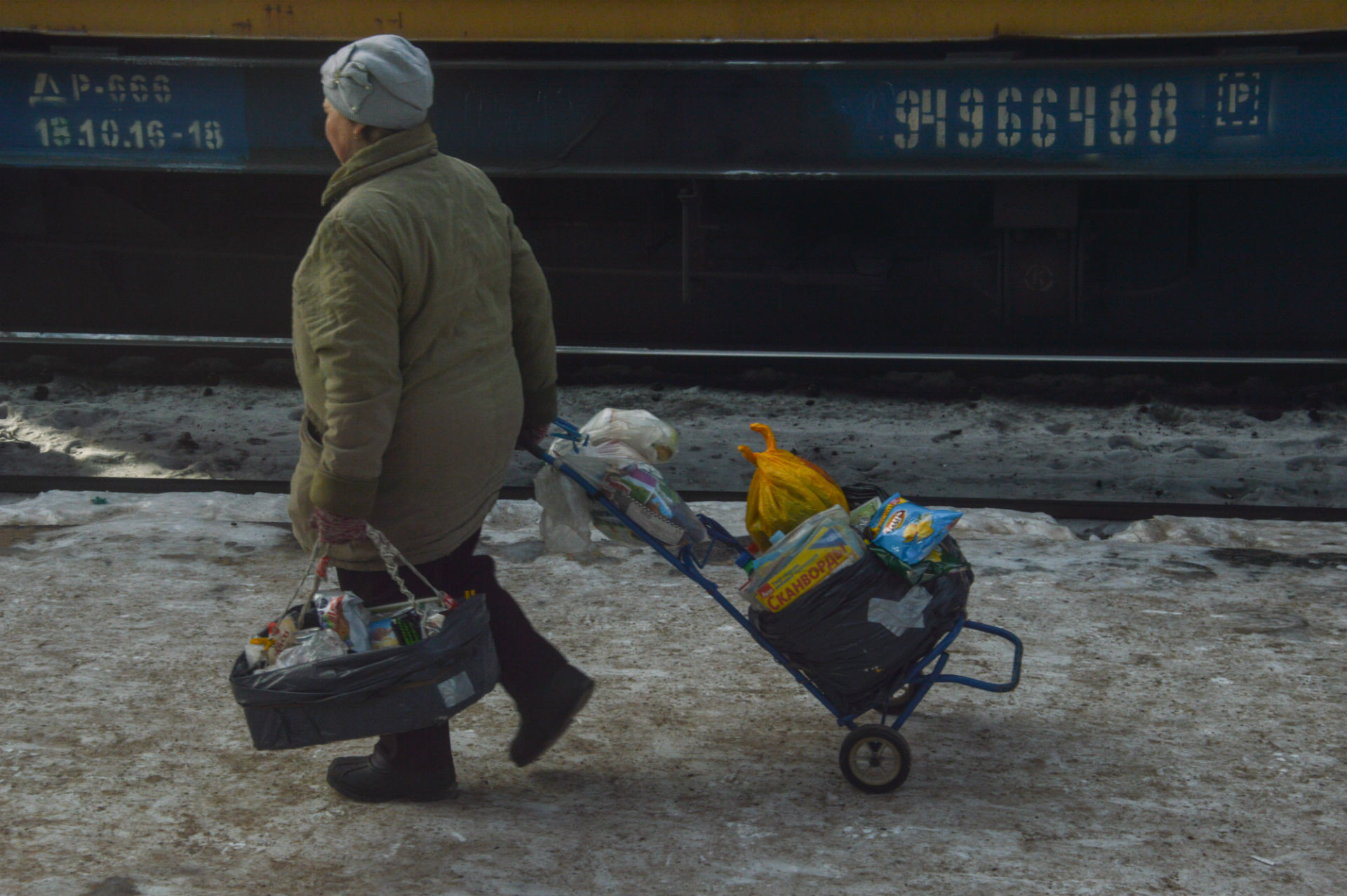
Babushkas get ready to sell their merchandise as they wait for passengers to arrive on the next train.
Erwann PensecWe sat inside his red minivan and soon after were joined by several Russian tourists who were clearly skiing enthusiasts. Our driver decided to drop us off at our hostel last so that we could catch a glimpse of the town on the way. He also showed us the polar-alpine botanical gardens (the world’s northernmost garden), a sports center, the abandoned train station and told us about the mountains surrounding the town, which has a population of around 27,000 people.
Kirovsk: A breathtaking city and the capital of silence
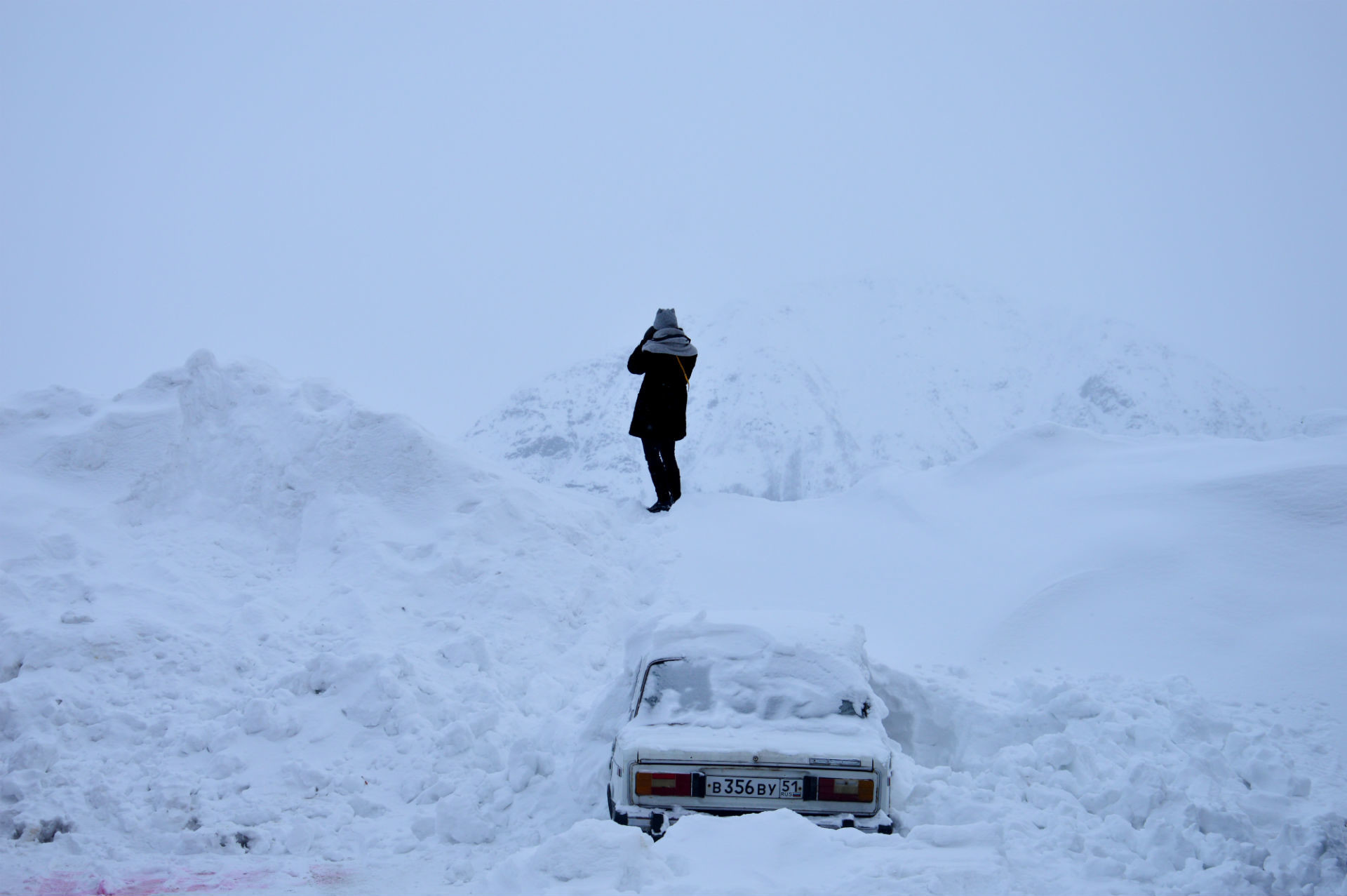
The white snow and silence makes for a surreal experience.
Erwann Pensec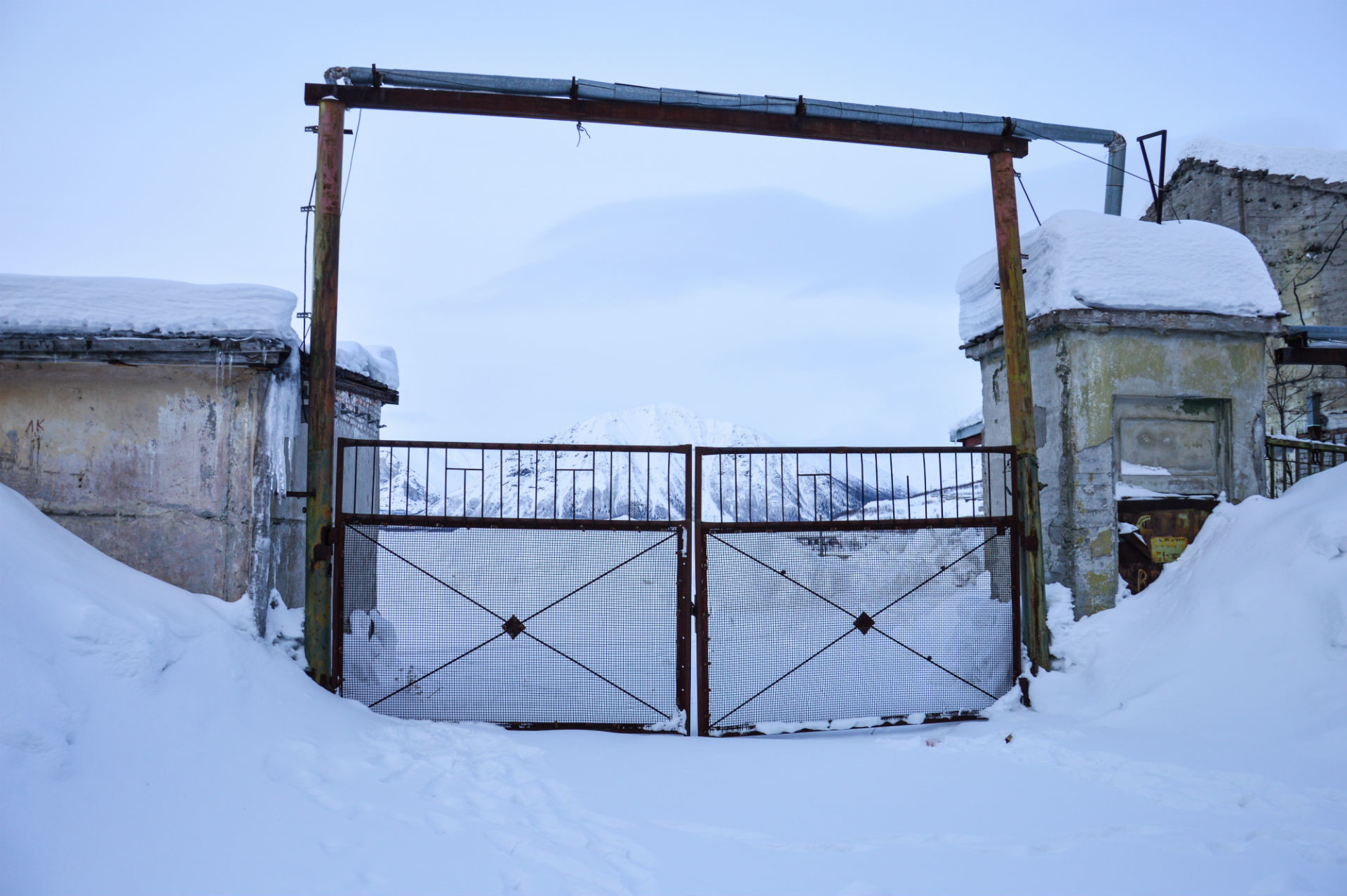
The town is full of abandoned buildings and deserted areas.
Erwann Pensec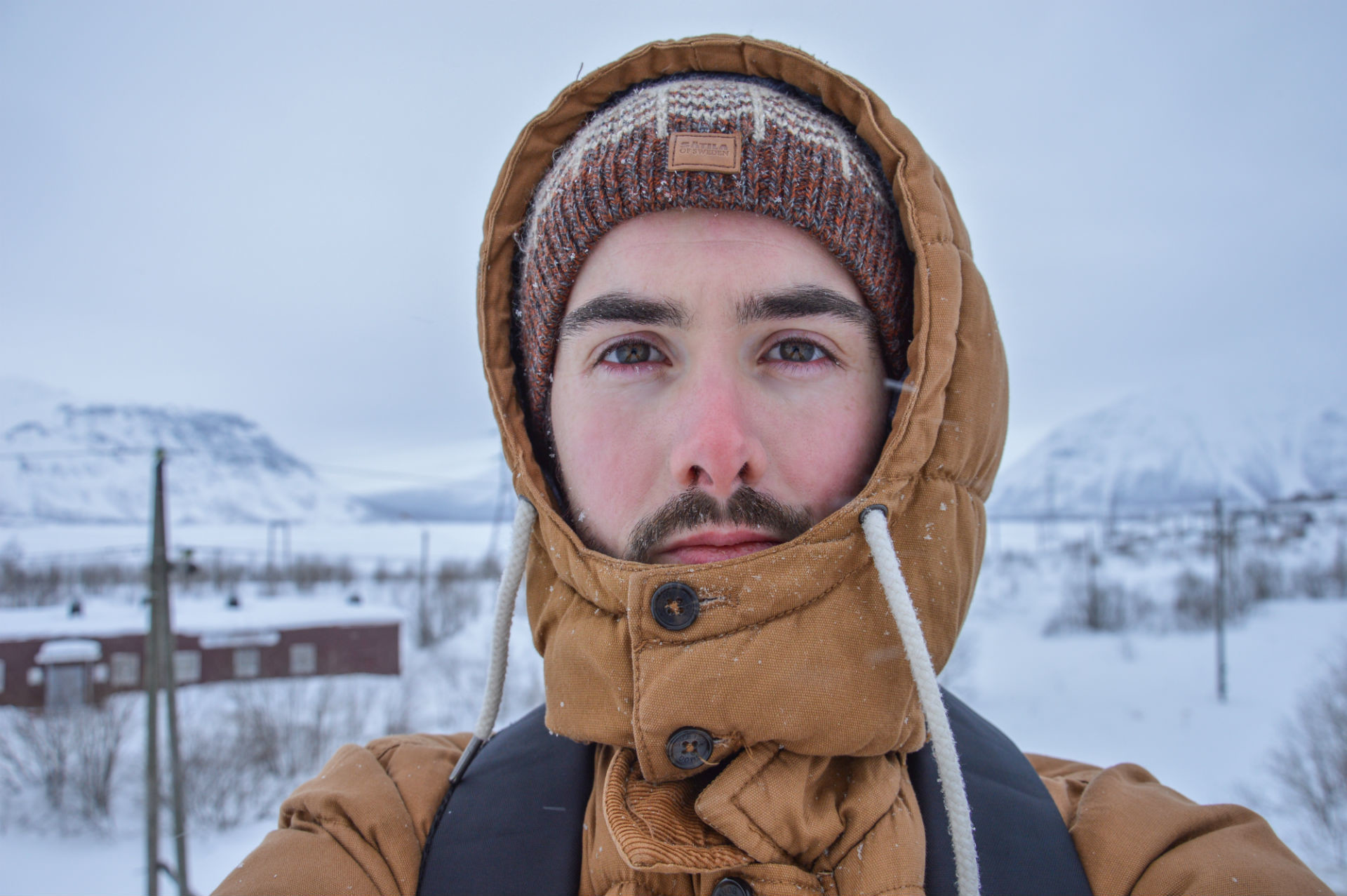
The cold is not as unbearable as you’d think, but it’s still wise to wrap yourself up to keep warm.
Erwann Pensec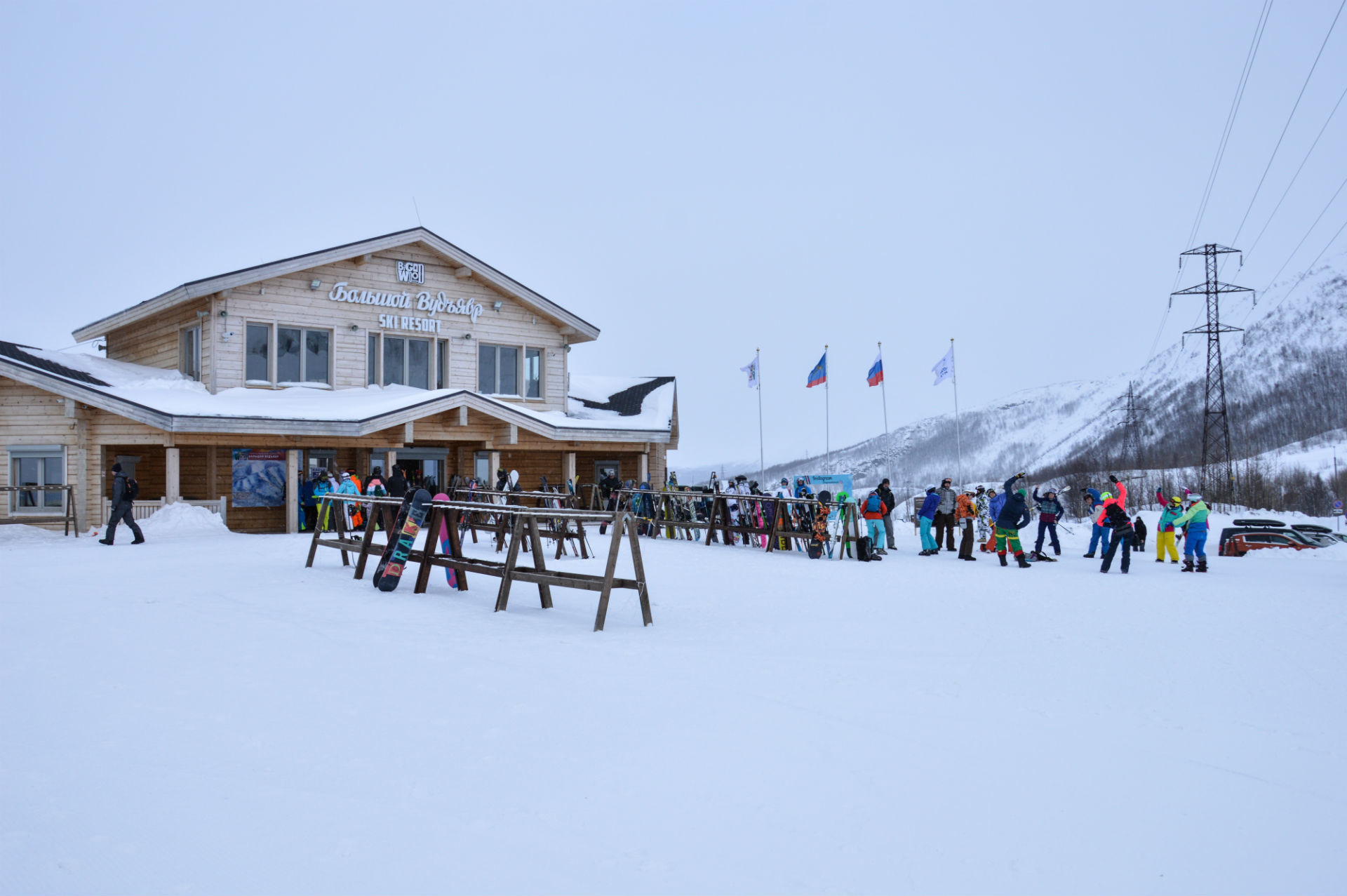
Skiers and snowboarders flock to this brand new resort
Erwann Pensec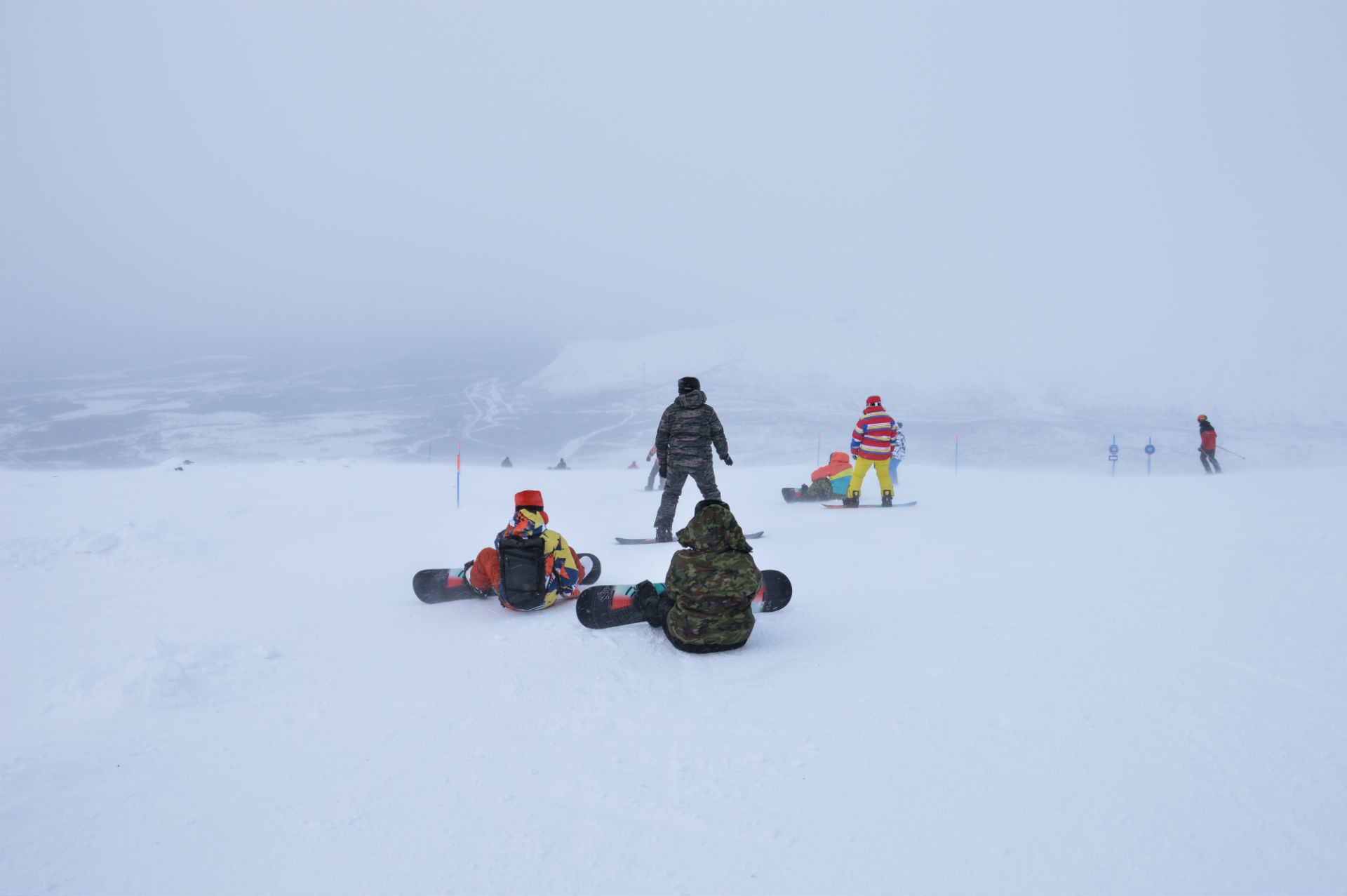
Braving the elements on top of a mountain.
Erwann PensecSevernaya Hotel is the best example and almost makes you forget about the impressive Palace of Culture or the monumental city hall. We wandered around the narrow streets and ended up discovering an incredible vantage point from which we could see trains transporting minerals over the mountain. Although tourism in this area has increased in recent years, especially during the winter, Kirovsk is first and foremost a mining city with a lot of industrial facilities.
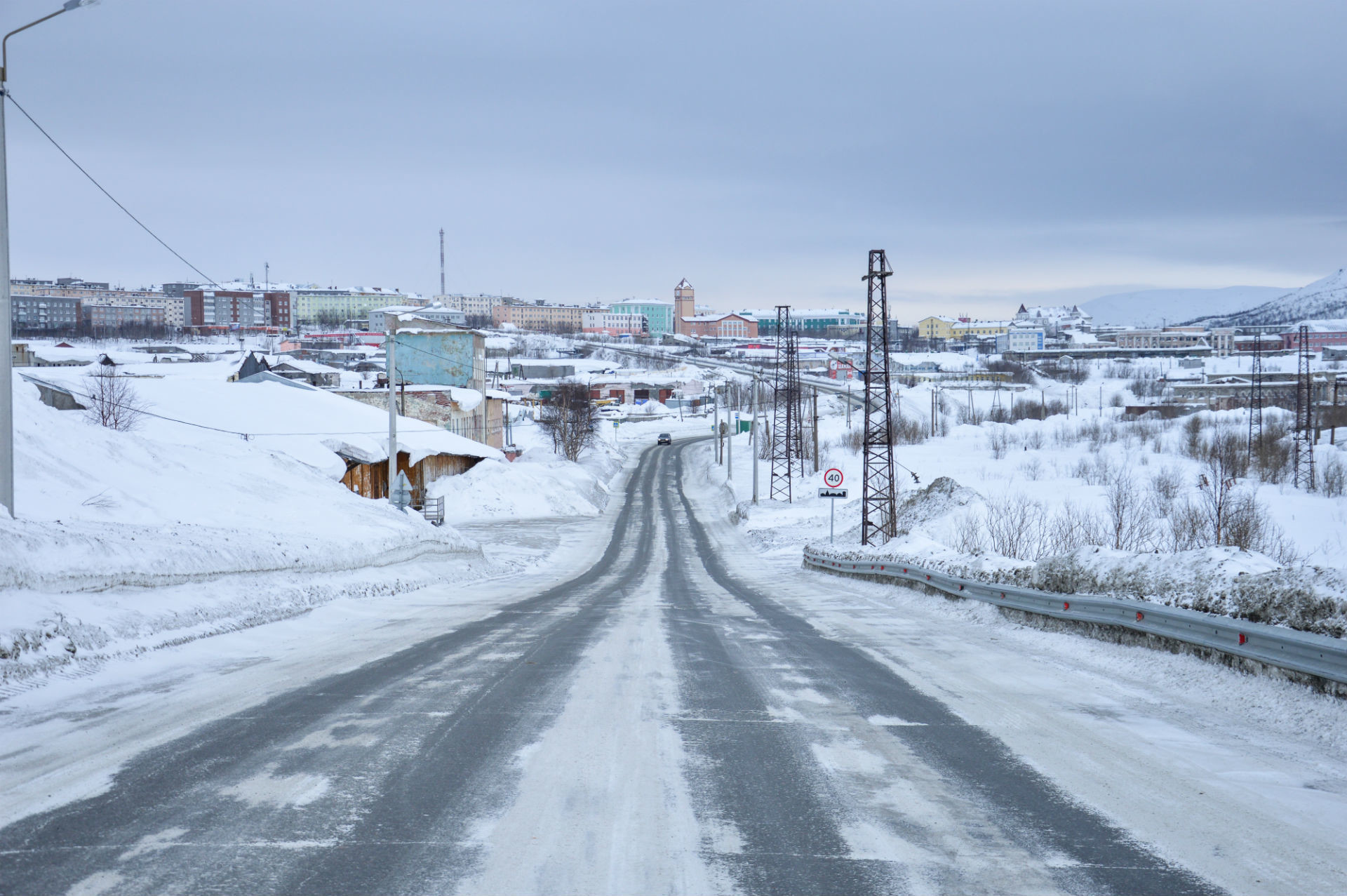
The city sleeps under a white blanket.
Erwann PensecAfter finishing our meal at the hostel, where the sound of laughter and Russian music livened up the atmosphere, we met a group of miners from Belarus and ended up sharing a room with two of them. They’d been living in Kirovsk for over a month, working on a project that was supposed to last 15 years. They had expected to be given an apartment when they arrived, but things didn’t go as planned and they were forced to stay in this hostel instead.
They welcomed us with open arms and even invited us to drink a few glasses of vodka with them. As often happens when vodka enters the equation, this led to singing, an arm-wrestling competition and sharing stories with each other.
Initially we had planned to spend a quiet night in, but
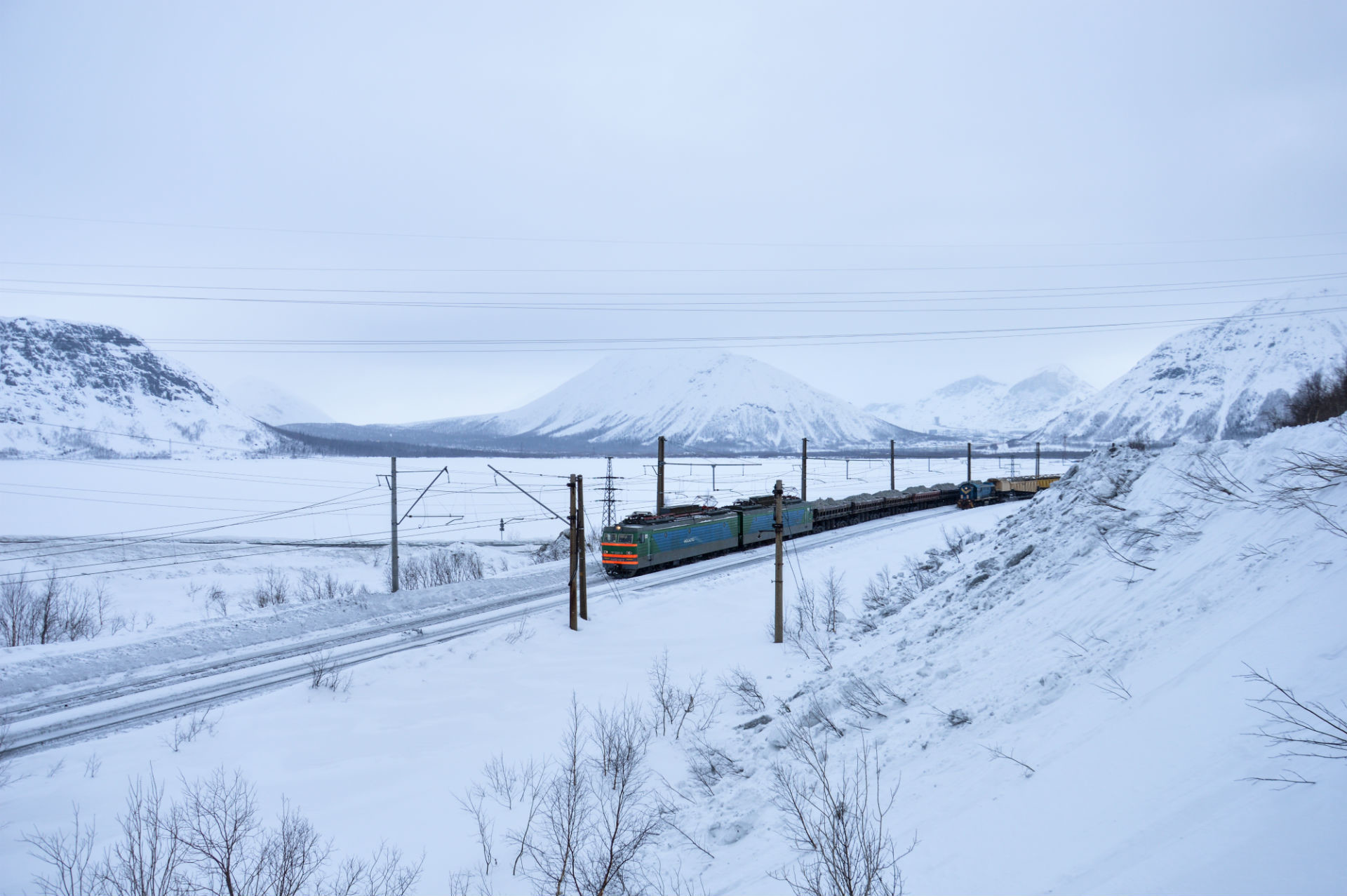
A mining train winds around a mountain.
Erwann PensecThe next morning, after a short night’s sleep, we packed our bags and said goodbye to our new friends. We headed towards a women’s monastery in Khibinogorsk that we’d heard about during the spontaneous car trip the day before. To reach the monastery, we had to travel several kilometers on foot along the frozen Bolshoy Vudyavr Lake (which the ski resort is named after).
Once again, we were treated to a breathtaking view. The black and white landscape was brought to life with colorful buildings and vehicles dotted here and there. After walking in the snow for a good hour, we finally arrived at an elaborately decorated church in the monastery, where we were encouraged to light a candle
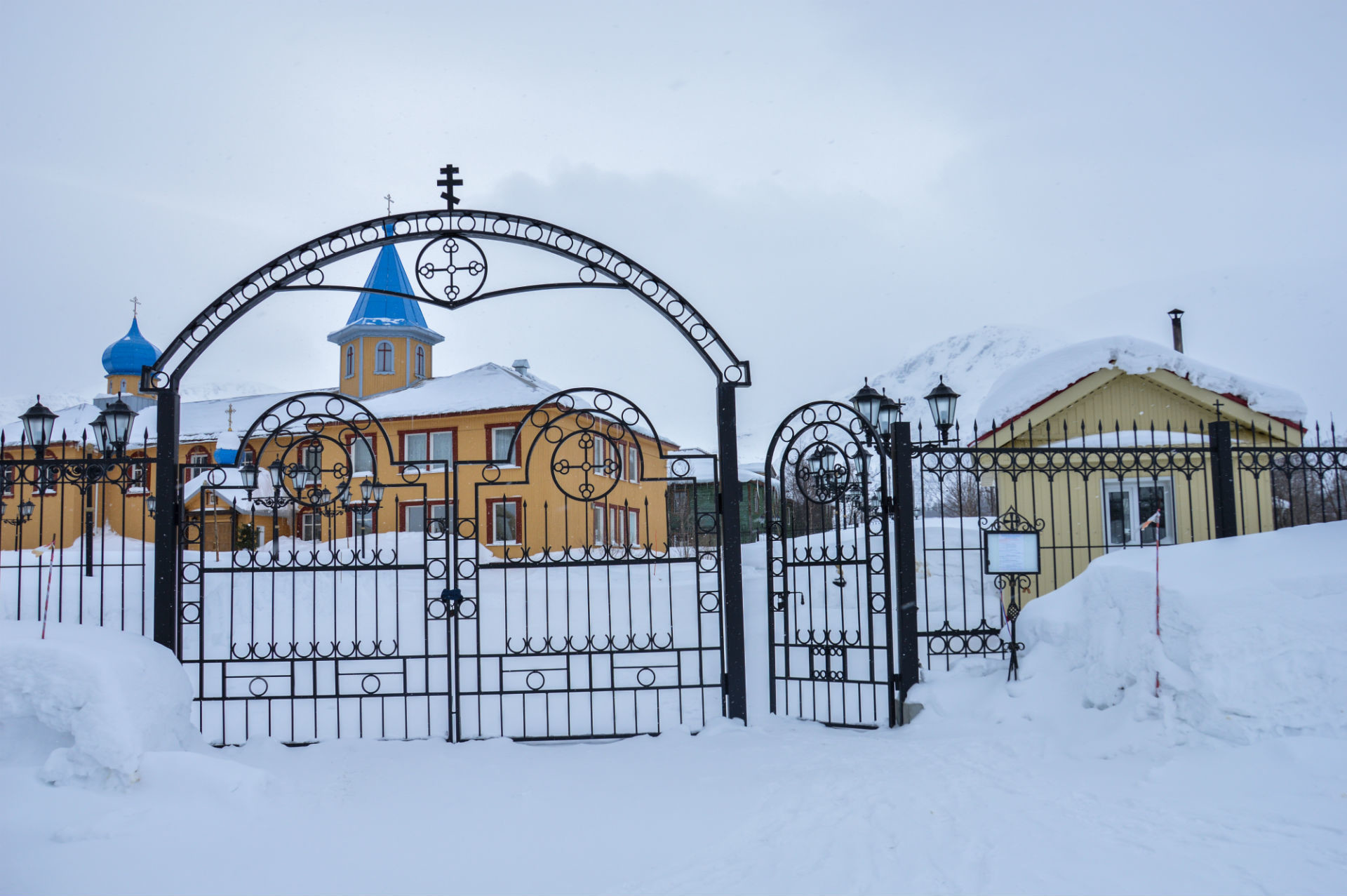
Located at the foot of the mountains, the monastery brings a touch of color to a monochromatic setting.
Erwann PensecJust as we were about to leave, the waitress approached me, looking somewhat embarrassed, and asked for my autograph. Although surprised, I agreed and didn’t ask why. Maybe she’s never met someone from France before? We then headed towards the bus stop to make our way to the town of Apatity, which we were hoping to visit before catching our train up to Murmansk
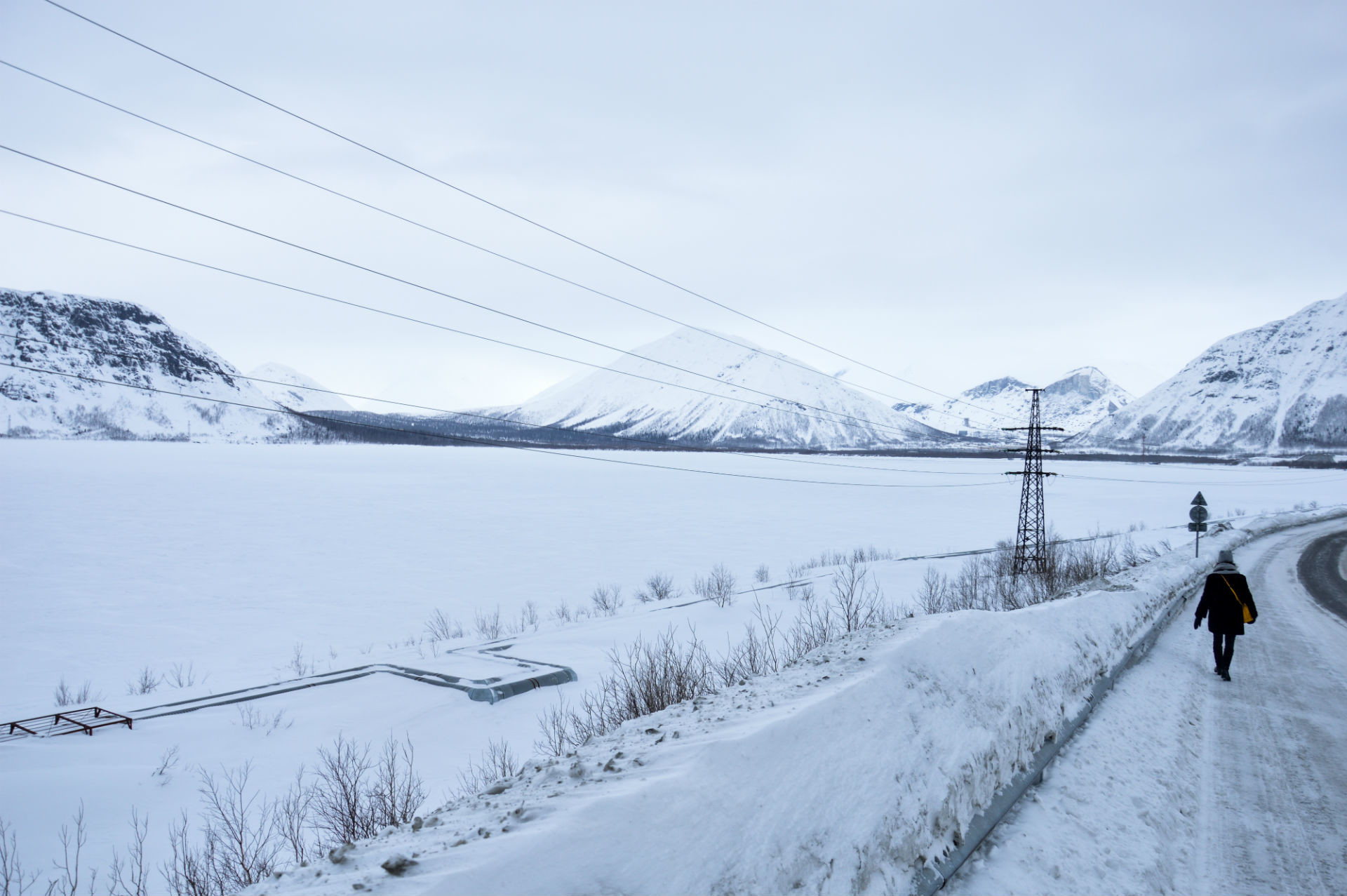
Bolshoy Vudyavr Lake covered with a white blanket of snow.
Erwann PensecMurmansk: Gateway to the Arctic Ocean
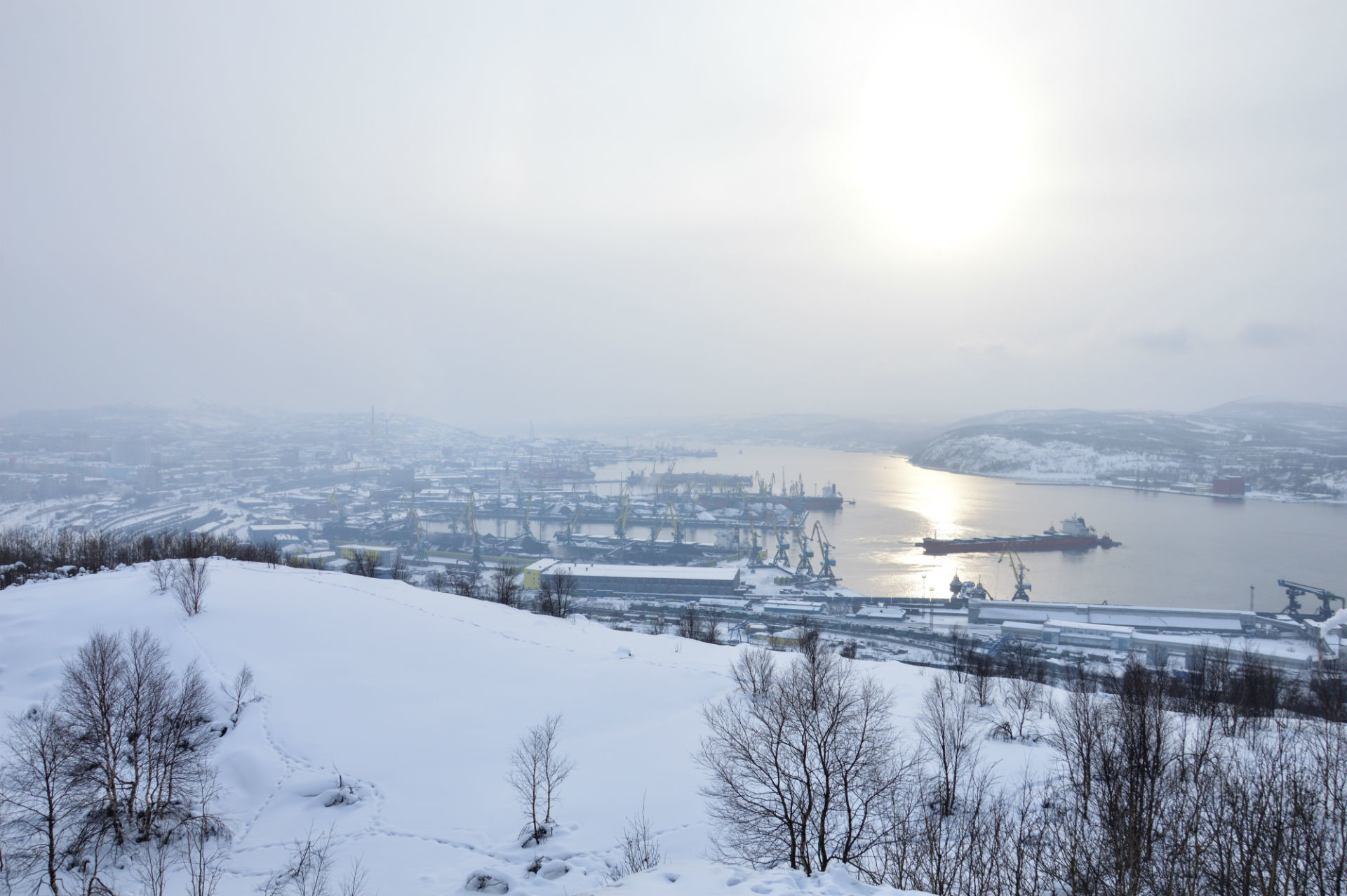
The horizon disappears behind a thick curtain of snow and fog.
Erwann PensecMurmansk’s train station is beautiful: a spectacular green building with a red star on top. Outside the station, we arrived at what appeared to be the city’s main square, which had various sculptures and even an ice toboggan on display.
I couldn’t resist the temptation to try out the toboggan myself, alongside a bunch of kids who seemed to be having a blast despite the late hour. However, without a
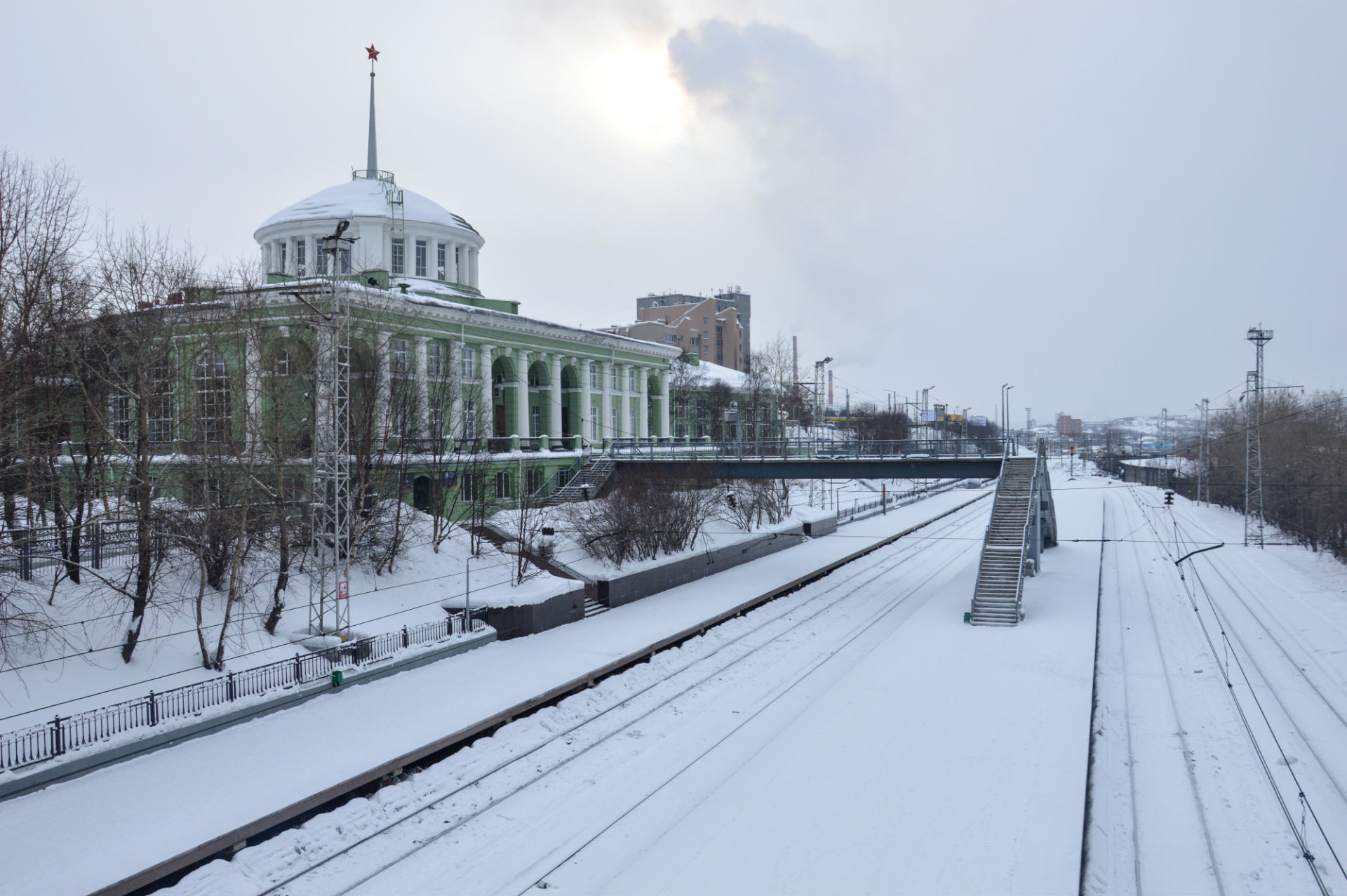
The red star, which travelers will notice upon arrival, is a symbol of a bygone era in Murmansk.
Erwann PensecOn our way there, we admired Murmansk’s colorful buildings and impressive boulevards. While the state of some buildings leaves something to be desired, you cannot question the glorious past of the city. The café was modern, charming and cozy. The food exceeded our expectations, especially the mushroom and spinach blinis, which were a real treat.
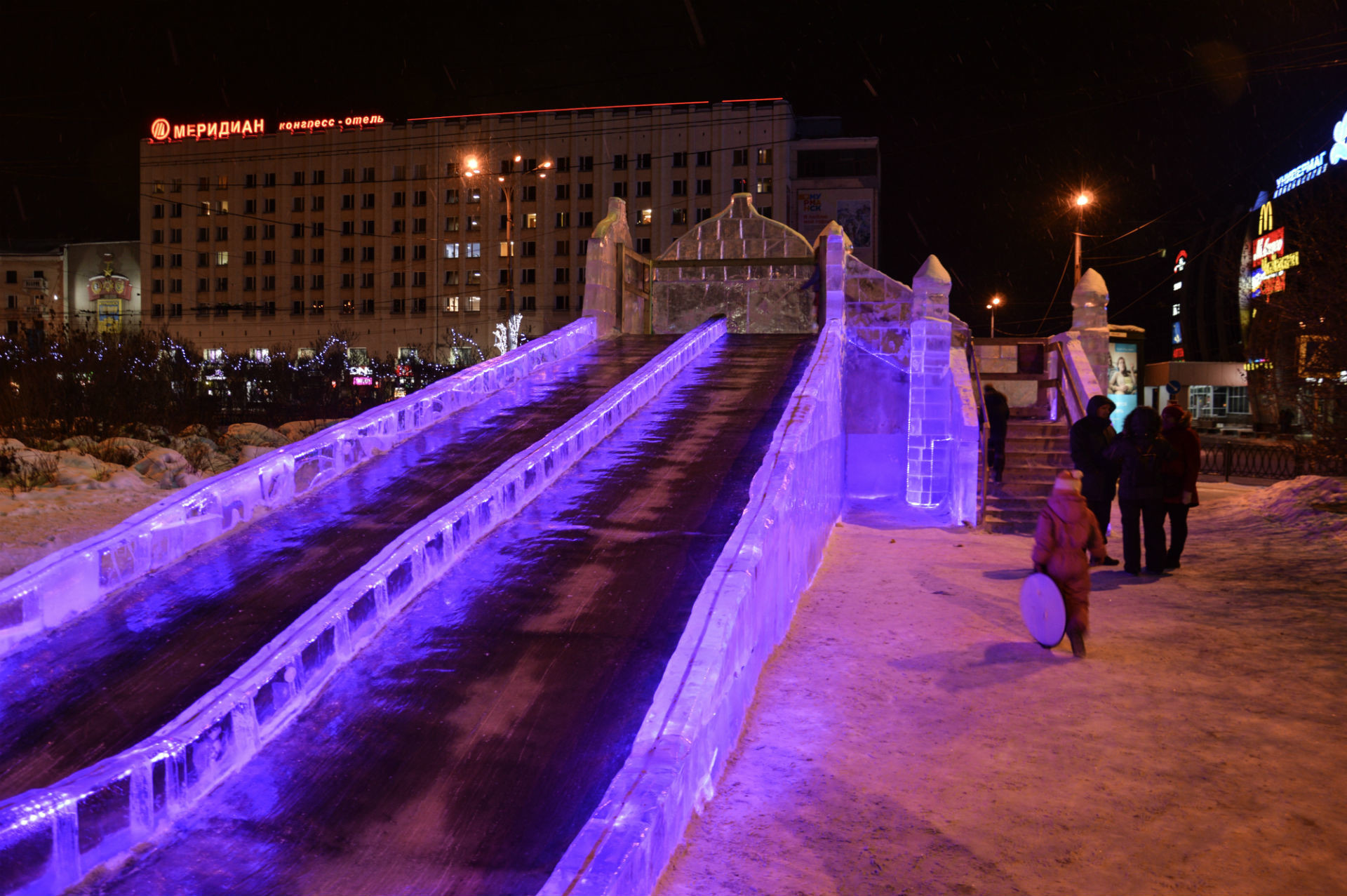
Who could possibly resist having a go?
Erwann PensecWe made our way to the port, where we came upon the legendary “Lenin,” the world’s first nuclear-powered icebreaker. They offered tours on board the ship, but we were on a tight schedule and didn’t have time. We climbed up a hill towards a lighthouse, which stands proudly in memory of sailors who died during peacetime. Inside, the sound of crashing waves resounds.
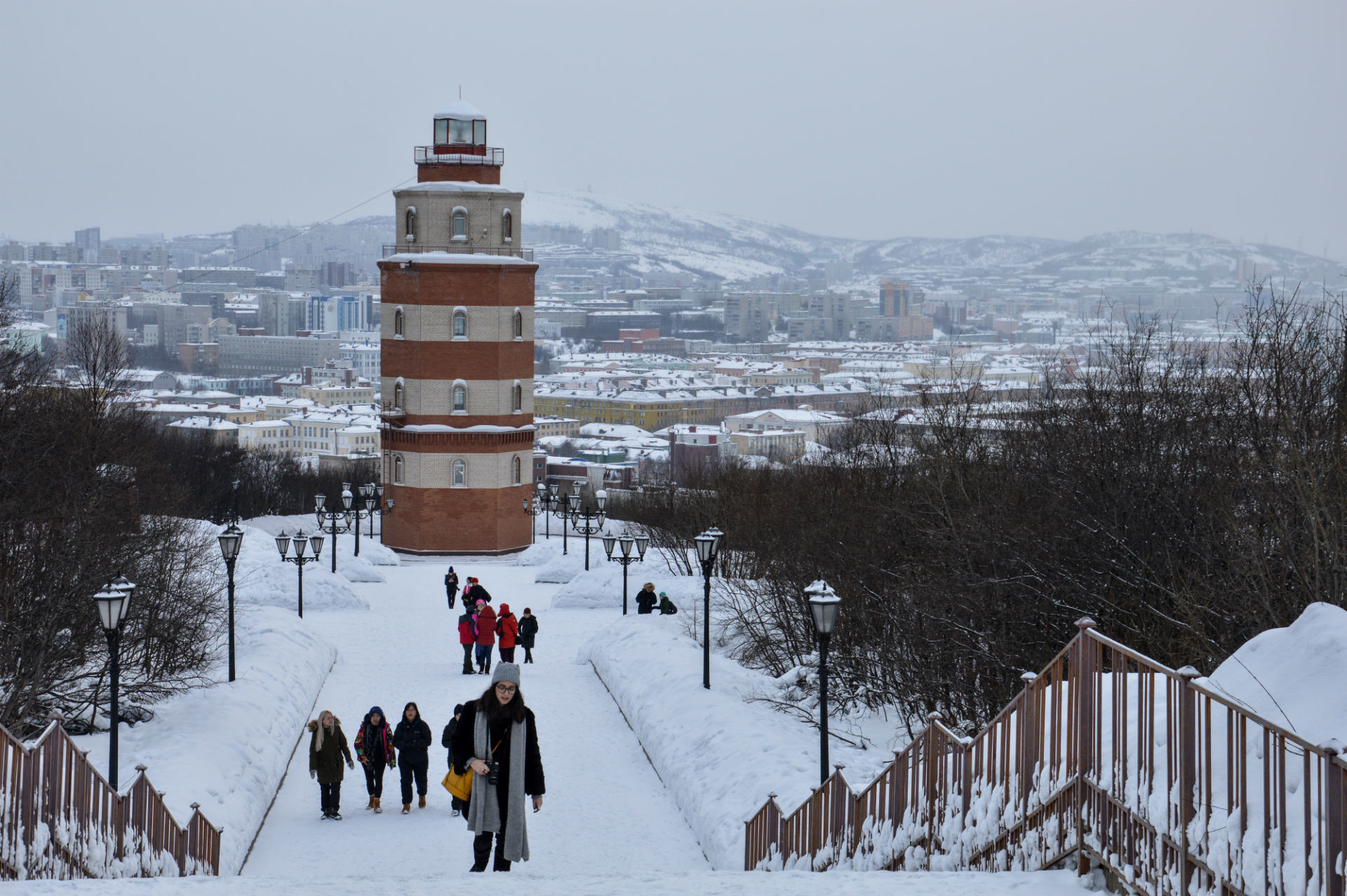
The lighthouse looms over the city and sea. Fishing and shipbuilding industries are important in this region.
Erwann PensecEventually, we headed toward higher ground and the enormous monument to the Defenders of the Soviet Arctic during the Great Patriotic War. This statue, also known as Alyosha, is the second largest monument in Russia after “The Motherland Calls” in
On our way there, we even saw some beautiful huskies that came up to make friends with us. In front of the gigantic stone soldier with his gaze is fixed on the distant horizon, there is an eternal flame. The view was, once again, spectacular: a snow-covered city, a frozen lake
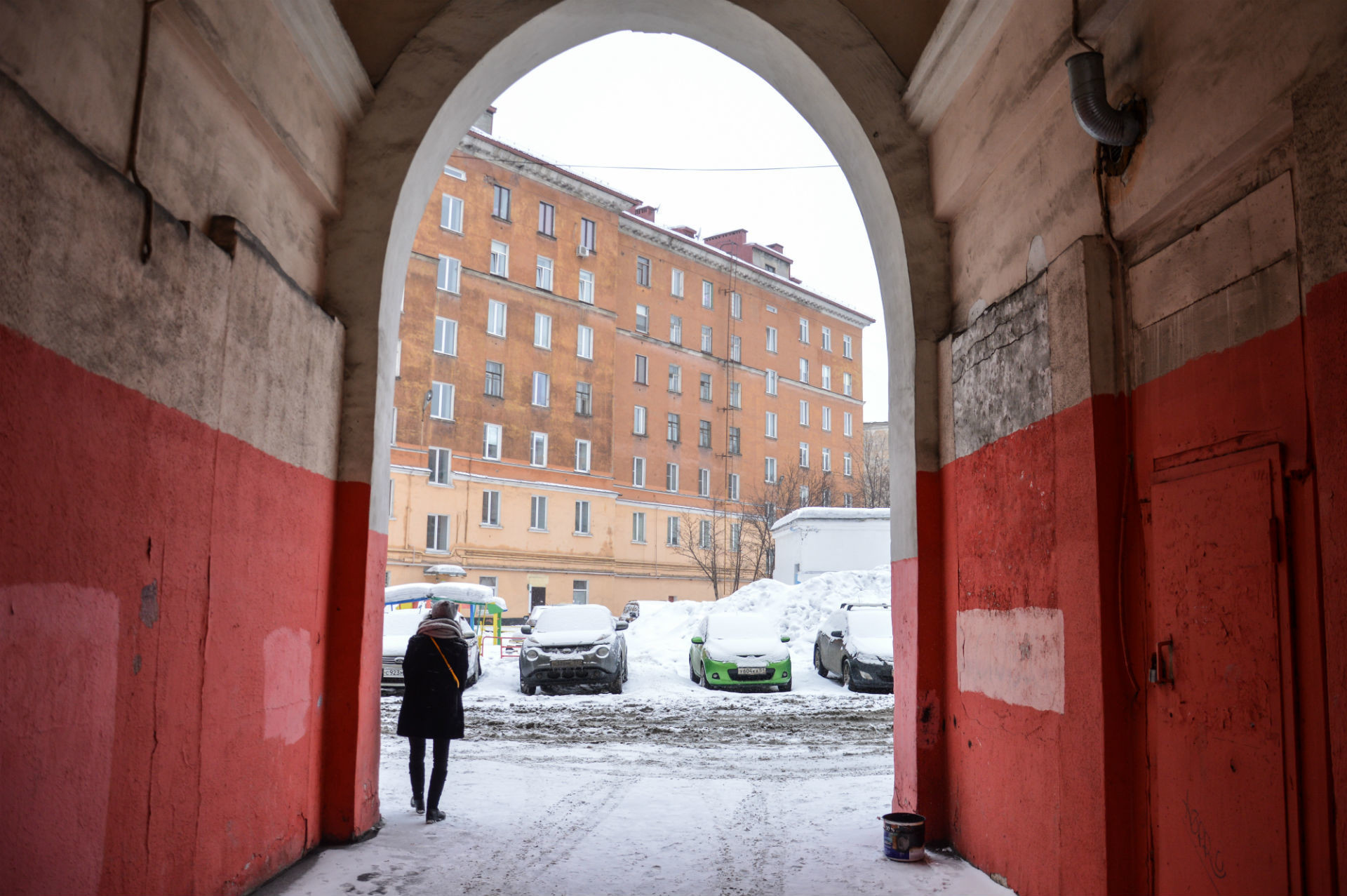
Arches leading to a courtyard capture the city’s sumptuous past.
Erwann Pensec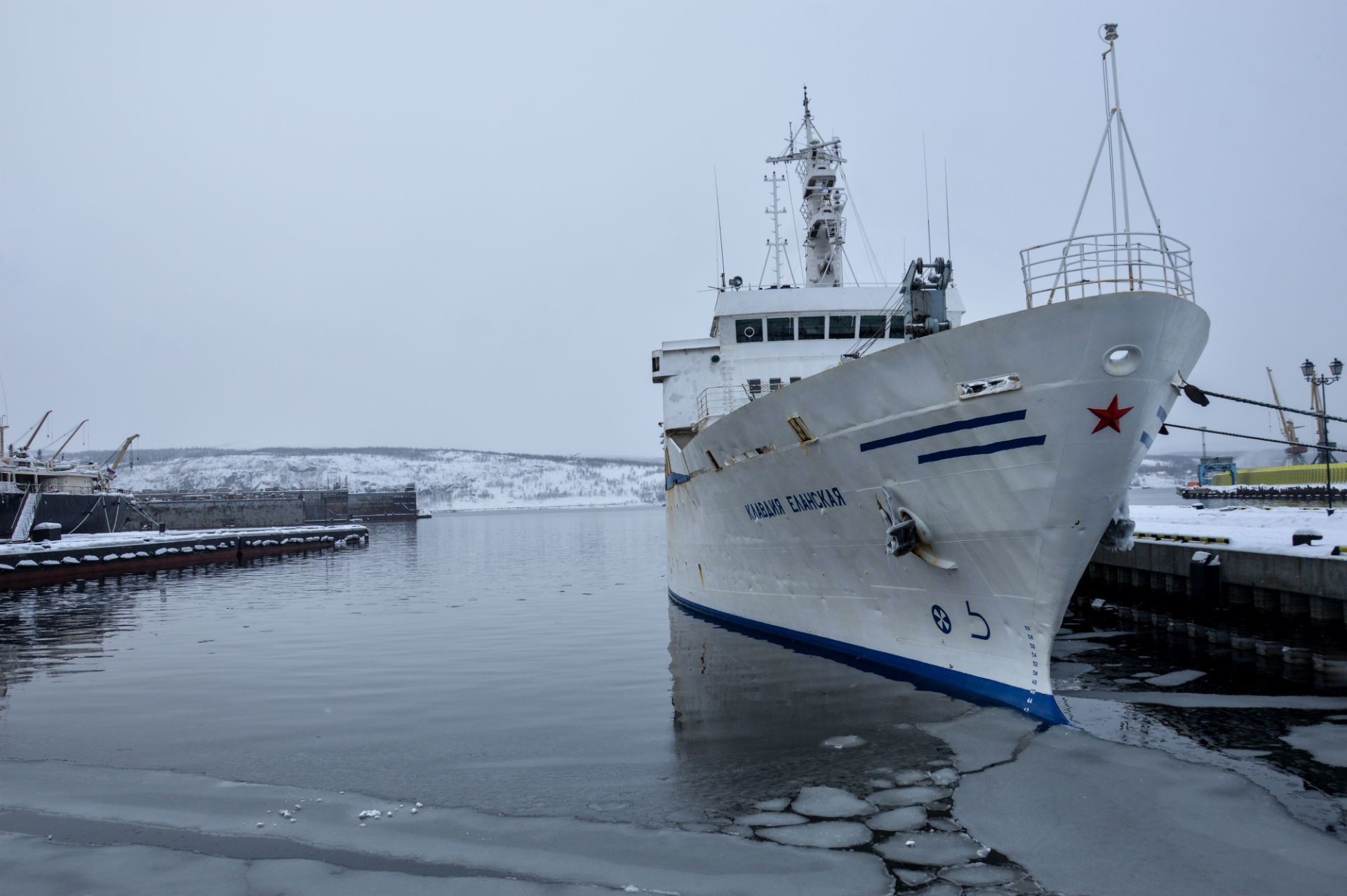
Both the docks and the city, which was founded before the revolution in 1915, reflect the Soviet past.
Erwann Pensec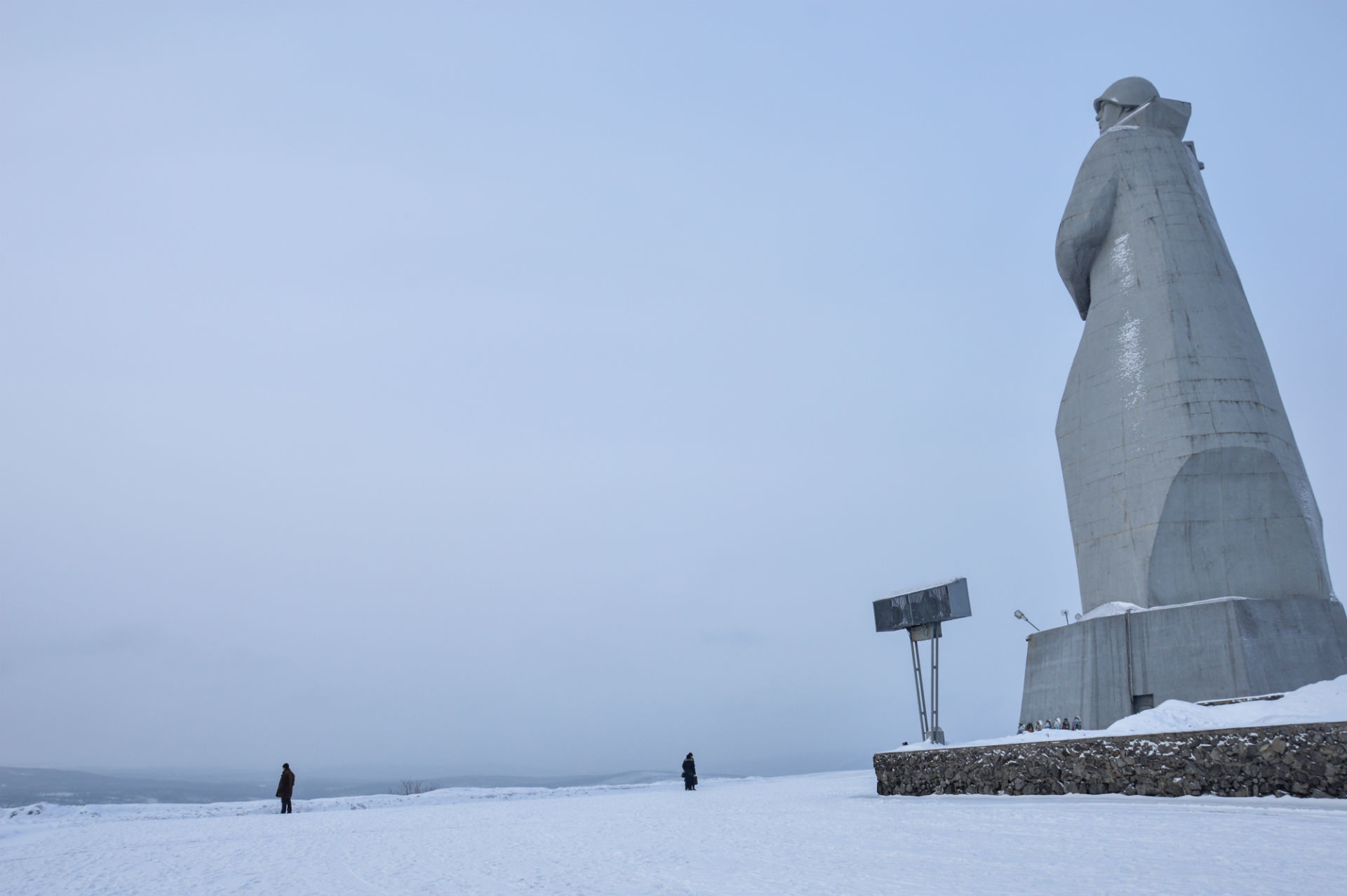
If you feel dwarfed by this statue’s size, trust me, it’s nothing compared to the huge Kola Peninsula.
Erwann PensecRead more: A brown man in Russia: Lessons learned on a Trans-Siberian rail journey
If using any of Russia Beyond's content, partly or in full, always provide an active hyperlink to the original material.
Subscribe
to our newsletter!
Get the week's best stories straight to your inbox